Have you ever wondered why your typically sweet and lovable Scottish Fold suddenly turns into a furry ball of fury? Managing aggression in Scottish Fold cats can be a real challenge, but understanding the root causes and implementing effective solutions is key to a peaceful coexistence.
From play aggression to territorial disputes, dealing with aggressive behavior in Scottish Fold cats involves recognizing the triggers and adopting the right techniques. It’s essential to avoid physical punishment, which can escalate the problem, and instead focus on behavioral modifications and creating a calm, enriching environment. Regular check-ins with your veterinarian are also crucial in monitoring progress and addressing any underlying issues.
Key Takeaways
- Identifying the type of aggression is crucial for effective management.
- Avoid physical punishment, which can worsen aggressive behavior.
- Create a stable and enriching environment to minimize stress.
- Implement behavioral modifications tailored to your cat’s needs.
- Regular veterinary follow-ups can help manage and monitor aggression.
- Consider medication for severe cases, under veterinary advice.
Understanding Scottish Fold Cat Teaching Aggressive Behavior
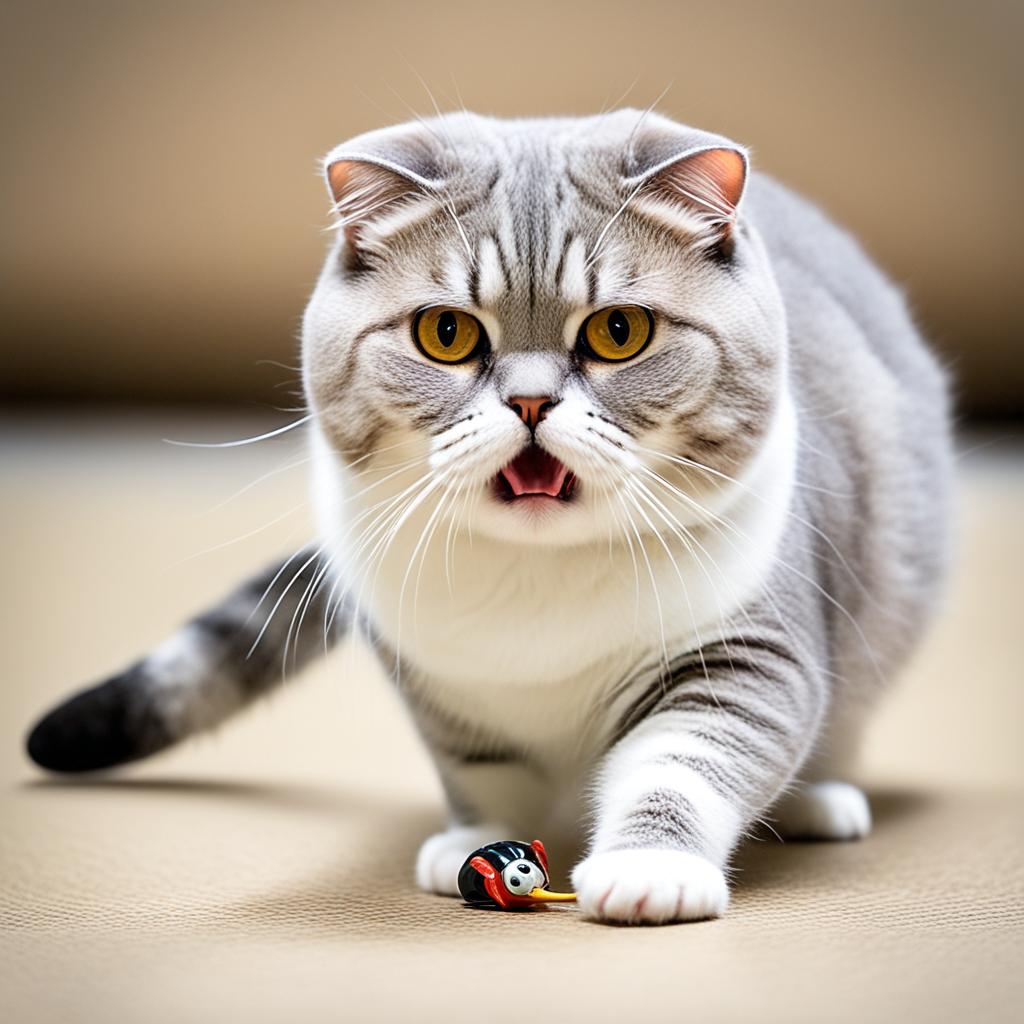
Scottish Fold cats, known for their distinctive folded ears and endearing demeanor, usually showcase affectionate and adaptable traits. However, sometimes positive attributes can be eclipsed by aggression, evidenced through scratches, bites, and more. But what are the typical behaviors of these felines and how important is early socialization?
Typical Scottish Fold Traits
Scottish Folds are generally recognized for their calm and loving nature. They are less aggressive compared to other breeds like the Maine Coon and Ragdoll. Nevertheless, environmental factors, genetics, and early life experiences significantly influence Scottish Fold cat behavior. Positive interactions from the get-go play a vital role in shaping a well-rounded cat.
Importance of Early Socialization
Early socialization benefits cannot be overstated when understanding and managing tips for dealing with aggressive Scottish Fold cats. Introducing kittens to a variety of people, environments, and other pets during their formative weeks can mitigate aggression in adulthood. This foundational phase helps them become accustomed to diverse stimuli, ultimately preventing unwanted aggressive tendencies.
“No amount of tips for dealing with aggressive Scottish Fold cats will outweigh the positive impact of thorough early socialization,” says a leading veterinarian.
Common Causes of Aggression in Scottish Fold Cats

Aggressive behavior in Scottish Fold cats can be unnerving, but understanding the causes can help you address the issue effectively. Several factors contribute to these behaviors, ranging from genetics to health conditions.
Genetic Factors
The genetic predisposition to aggression can be significant in Scottish Fold cats. This breed may inherit tendencies towards aggression from their lineage, making it essential to be aware of these genetic influences. Selective breeding sometimes exacerbates these traits, further highlighting the importance of understanding your cat’s genetic background.
Fear and Anxiety
Fear and anxiety in cats are common catalysts for aggressive behavior. Whether it’s a new environment, loud noises, or unfamiliar people and pets, such stressors can trigger aggression in a Scottish Fold. Recognizing fear and anxiety is crucial, as cats often display body postures that signal their discomfort, which can quickly escalate to aggressive responses if not addressed promptly.
Medical Conditions
Medical triggers for aggression are often overlooked but are equally critical to consider. When faced with pain or discomfort, a Scottish Fold may react defensively to avoid further distress. Regular veterinary check-ups can help identify underlying health issues that may be prompting aggression.
How to Handle Aggression in Scottish Fold Cats?

Managing unexpected aggression in Scottish Fold cats requires patience, consistency, and a multifaceted approach. Understanding their triggers is your first step. It may be anything from a sudden noise to an unfamiliar person or another animal.
Once you identify these triggers, establish safety measures. For example, using products like Soft Claws® can protect both you and your feline from injuries. Environmental enrichment plays a critical role here. Think scratching posts, interactive toys, and cozy hiding spots that can make your cat feel secure and engaged.
Behavioral interventions are also crucial. Command training can be incredibly effective; using positive reinforcement techniques, you can train your Scottish Fold to respond calmly to specific commands. Consistency is key here. Make your training sessions regular and persistent, reinforcing the behaviors you want to see.
Consultation with professionals should not be overlooked. Veterinarians and behaviorists can provide invaluable insights and strategies tailored to your cat’s specific needs. Regular check-ins will help monitor progress and make necessary adjustments.
- Identify triggers
- Implement safety measures
- Enhance the environment
- Use command training
- Keep consistent
- Consult professionals
| Strategies | Details |
|---|---|
| Identify Triggers | Observe what sets off your cat’s aggression |
| Safety Measures | Consider Soft Claws® and protective gear |
| Environmental Enrichment | Provide toys, climbing structures, and quiet spaces |
| Behavioral Interventions | Use positive reinforcement and command training |
| Consistency | Maintain regular training and routine |
| Consultation | Regular visits to veterinarians and behaviorists |
Identifying Aggression in Scottish Fold Cats
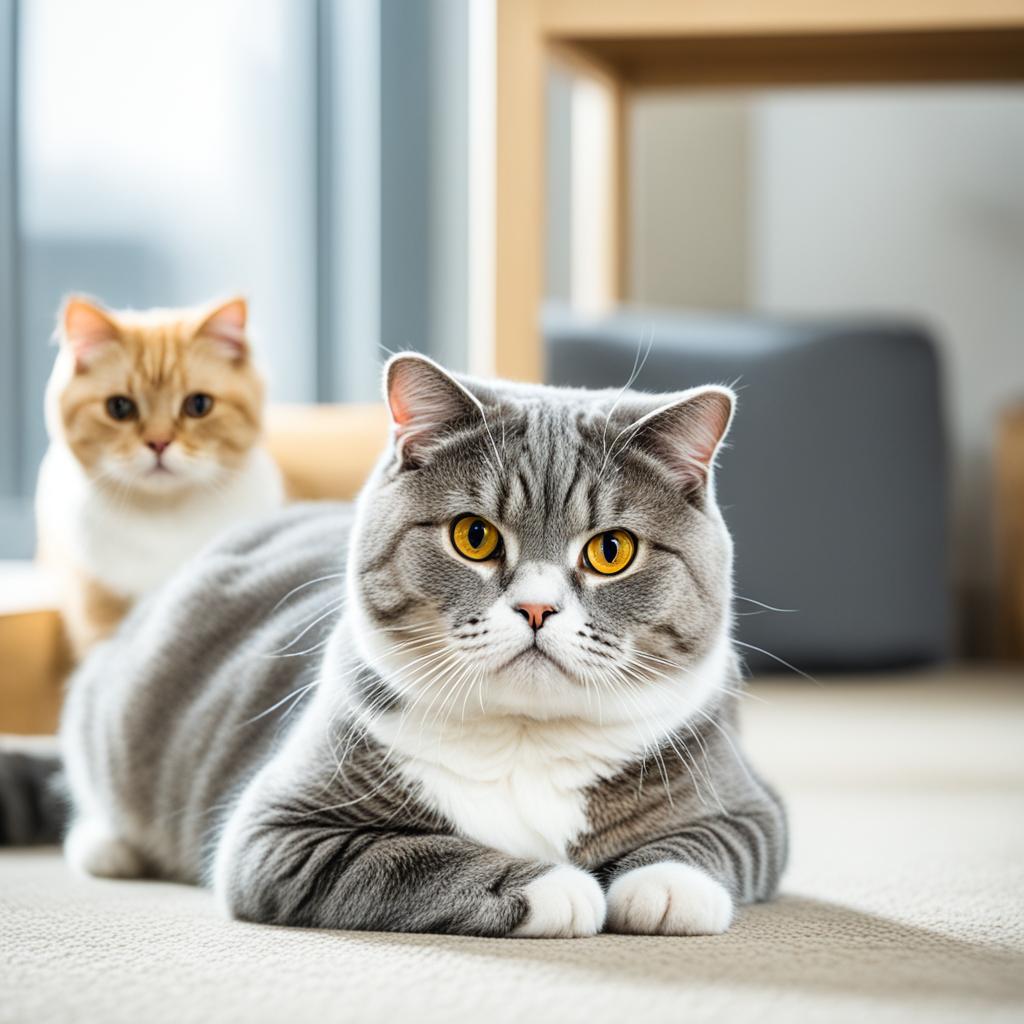
Understanding your Scottish Fold cat’s body language and behavior is crucial in addressing aggressive tendencies. Recognizing stress in feline companions early on helps in finding effective Scottish Fold cat aggression solutions.
Body Language and Signals
To identify signs of aggression, pay close attention to subtle changes in your cat’s body. Staring intensely, biting, and hissing are clear signs of aggressive behavior. Early warning signals, such as tail flicking, flattened ears, and dilated pupils, provide insights into your cat’s emotional state, hinting at underlying stress or discomfort.
Behavioral Patterns to Watch For
Observing your cat’s behavior is equally important. Abrupt changes in grooming habits, eating patterns, or unusually confrontational stances can be key indicators of stress. By noting these signs, you can better anticipate and intervene, implementing Scottish Fold cat aggression solutions before issues escalate. Recognizing these behavioral patterns allows you to proactively manage your Scottish Fold’s aggression, ensuring a harmonious living environment.
- Intense staring
- Tail flicking
- Flattened ears
- Dilated pupils
- Changes in grooming habits
- Altered eating patterns
Understanding and monitoring these signs of aggressive behavior will help you recognize potential stressors in your feline companion, ultimately leading to effective management and a more peaceful household.
Effective Tips for Dealing with Aggressive Scottish Fold Cats

Dealing with aggressive Scottish Fold cats involves more than just patience. It’s about implementing specific strategies designed for effective management of aggression and ensuring a harmonious environment. By focusing on creating a calm atmosphere and utilizing desensitization techniques, you can effectively transform your feisty feline into a more relaxed companion.
Creating a Calm Environment
One of the most important calming strategies for cats involves setting up a serene and secure environment. Providing cozy hiding places where your cat can retreat when feeling overwhelmed is crucial. Remove or minimize exposure to triggers that can cause stress and use positive reinforcement to promote desired behavior. Adding cozy spots like window perches can also provide a safe place for them to watch the world go by.
Desensitization Techniques
Desensitization is a gradual process that can foster desensitization success by reducing aggressive responses to certain stimuli. This technique involves gradually exposing your cat to the trigger in a controlled manner, paired with positive reinforcement. This approach requires patience and consistency but can significantly help in effective management of aggression over time. Structured play and relaxation routines are part of this process, using interactive toys to safely channel predatory instincts.
Above all, remember to continuously monitor and adapt these strategies to ensure a loving and peaceful relationship with your Scottish Fold cat.
Preventing Aggression in Scottish Fold Kittens
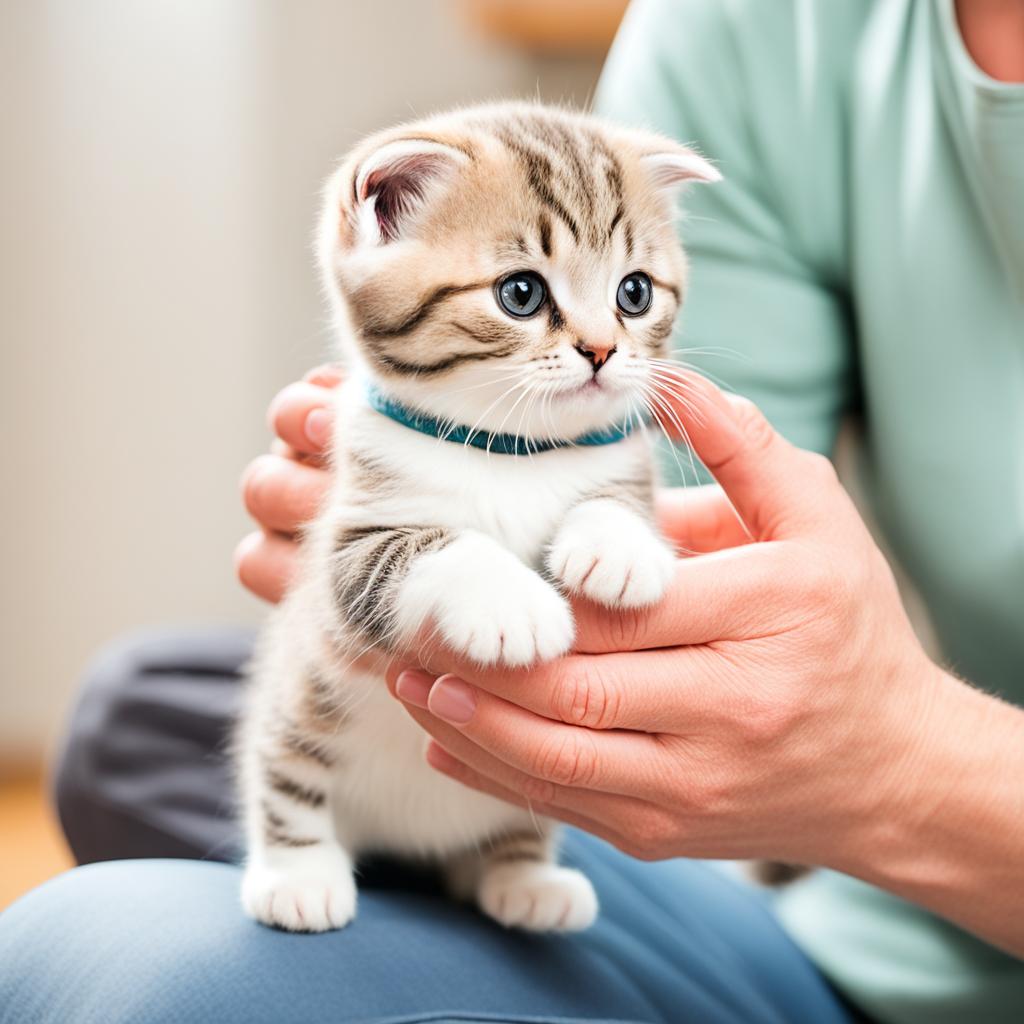
When it comes to raising well-mannered Scottish Fold kittens, the secret sauce lies in early intervention for aggression. It’s like planting the seeds of good behavior right from the start, ensuring your kitten doesn’t grow up to be the neighborhood bully. Here’s how to nip aggression in the bud.
Socializing Early On
Early socializing Scottish Fold kittens is crucial. Just as humans benefit from early exposure to diverse experiences, so do kittens. Take the time to expose your kitten to various people, environments, and other animals. This broad exposure helps develop their social skills, making them less prone to aggressive responses later on.
Monitoring and Managing Play
Monitoring kitten playtime is another essential ingredient in preventing aggression. Little furballs can get quite rambunctious, and what starts as playful bat-and-chase can rapidly escalate into something less cute. Keep an eagle eye on their interactions and step in when you notice overly aggressive behavior. Steering their play into more structured, gentle activities not only teaches impulse control but also strengthens the bond between you and your kitten.
Remember, early intervention for aggression and diligent monitoring kitten playtime is key to raising a well-adjusted, peaceful Scottish Fold. By focusing on socializing Scottish Fold kittens and ensuring their play remains gentle, you’re well on your way to fostering a furry friend who is a joy to have around.
When to Seek Professional Help
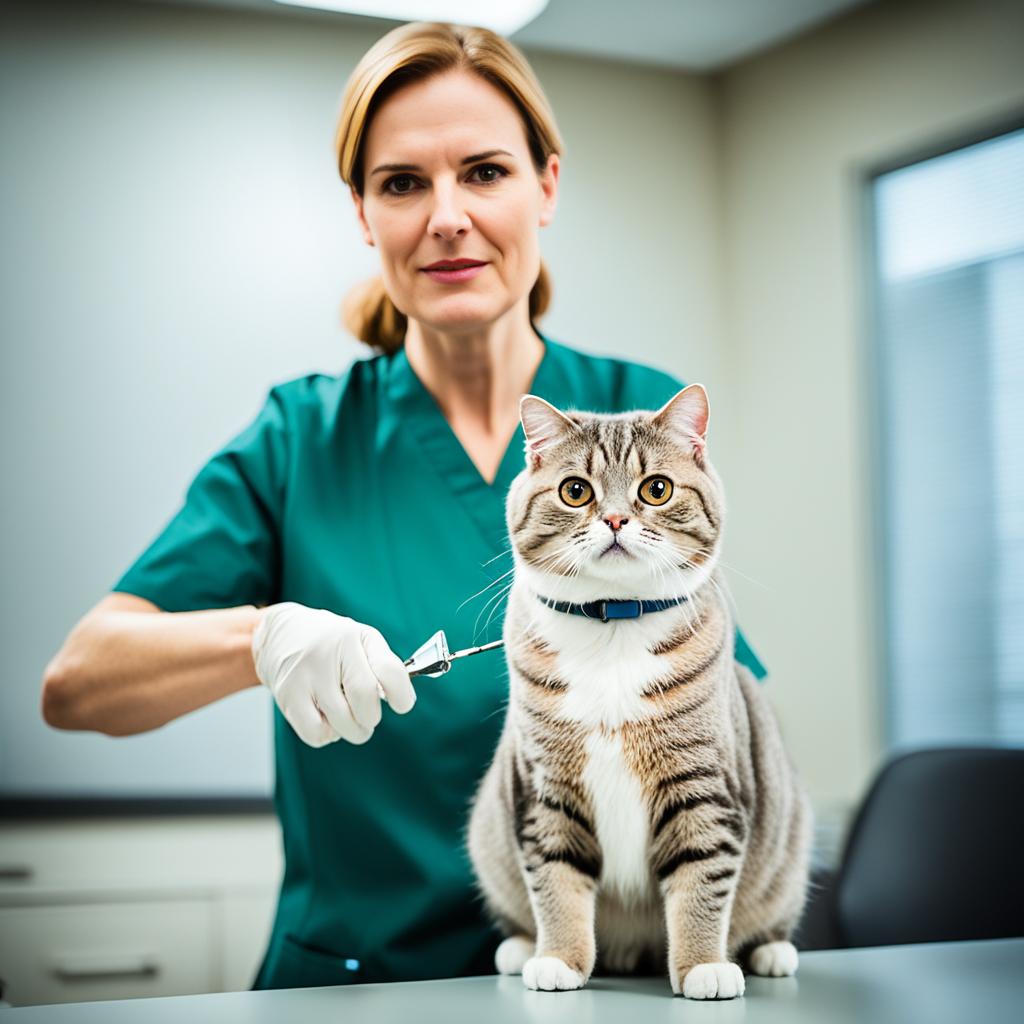
There comes a time when the battle with your Scottish Fold cat’s aggression surpasses DIY tips and tricks. Upon reaching this stage, calling in the experts is crucial—whether it’s a quick call to the vet or a deep dive with a behavioral specialist, professional help is available.
Consulting a Veterinarian
Jumping straight to consulting veterinarians can be a game changer. A medical perspective is essential to rule out any underlying health conditions that might be triggering the aggression. From pain to hormonal imbalances, understanding and treating these conditions can nip the problem in the bud.
Behavioral Specialists
When the medical routes provide no answers, turn to feline behavioral specialists. These experts excel in deciphering the complex language of cats and identifying behavioral triggers. They’ll equip you with customized strategies, environment tweaks, and in some cases, even suggest medications to manage the aggression effectively. Their guidance can transform your home from a battleground to a peaceful haven.
Long-Term Management of Aggressive Scottish Fold Cats
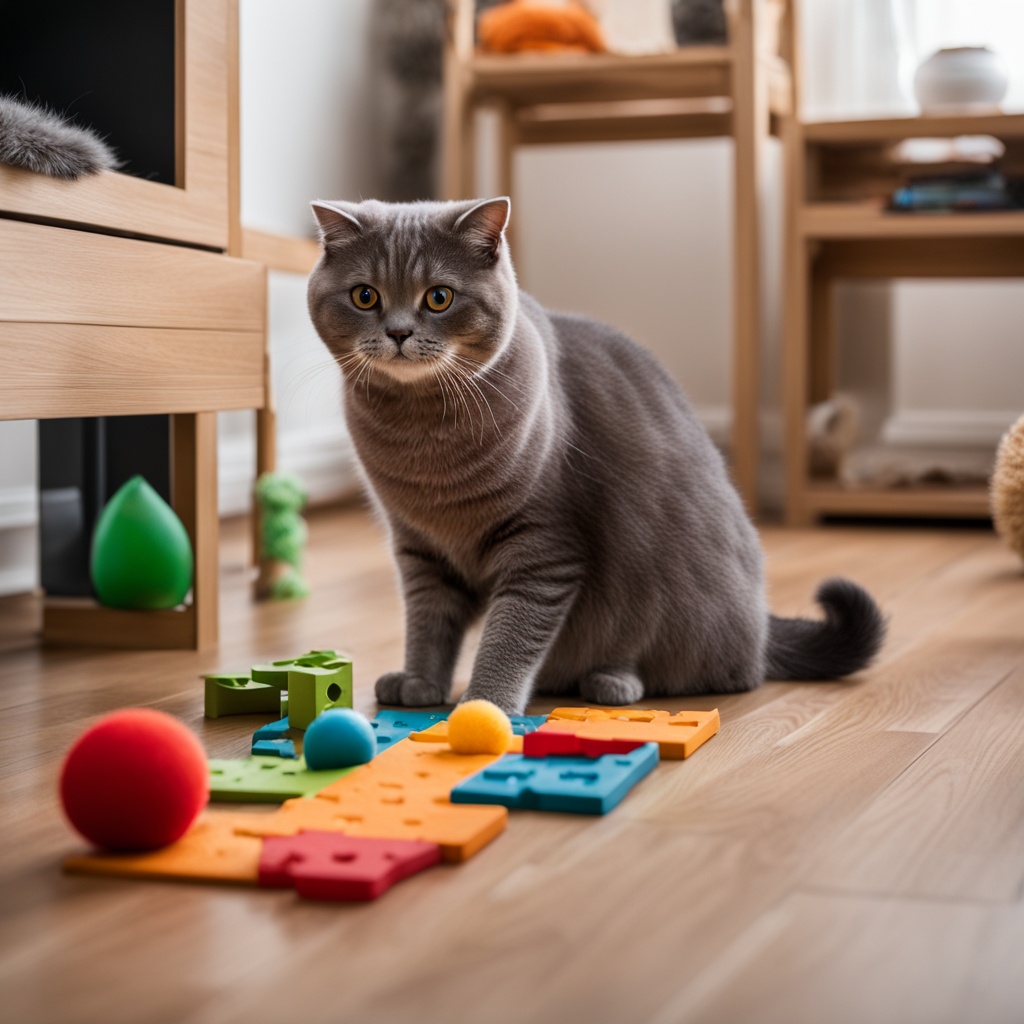
Long-term management of aggressive Scottish Fold cats requires a comprehensive approach that prioritizes their physical and emotional well-being. Incorporating environmental enrichment and ongoing behavior training are key strategies for reducing aggression over time.
Environmental Enrichment
Living a life without constant boredom is essential for your Scottish Fold cat. Imagine the joy of having climbers that reach the ceiling, scratching posts in every corner, and toys that engage their instincts! This form of environmental enrichment for cats is a lifesaver. By providing these stimulating items, you can significantly lower their stress levels and reduce aggression effectively.
Continuous Training and Monitoring
The journey doesn’t end with toys and climbers. Continuous training and monitoring are essential pillars. Regularly engage in ongoing behavior training to adapt and refine your cat’s behavior. Consistency is crucial—set routines, perform semi-annual wellness exams, and keep an eye out for any new stressors that might arise. This long-term strategy for aggression will help maintain a peaceful and loving home for both you and your furry companion.
Conclusion
Restoring peace with aggressive Scottish Fold cats involves a multifaceted approach that blends understanding, patience, and consistent training. By recognizing the signals and triggers of aggression, you can address these behaviors promptly and effectively. Creating a nurturing environment that meets their needs is crucial to fostering a harmonious household.
Embracing a holistic approach to feline aggression ensures that you not only mitigate unwanted behaviors but also enhance your cat’s overall well-being. This commitment includes professional support when needed, be it from your trusted veterinarian or a feline behavioral specialist. These experts can provide you with tailored strategies and solutions, ensuring your Scottish Fold receives the best care.
Addressing the challenges of feline aggression is part of the journey to a rewarding companionship with your Scottish Fold. With preventive measures, continuous training, and an enriched environment, you can cultivate a peaceful and loving relationship with your feline friend. By embracing these challenges, you’re taking a proactive step towards a more enjoyable and fulfilling experience with your Scottish Fold cat.




